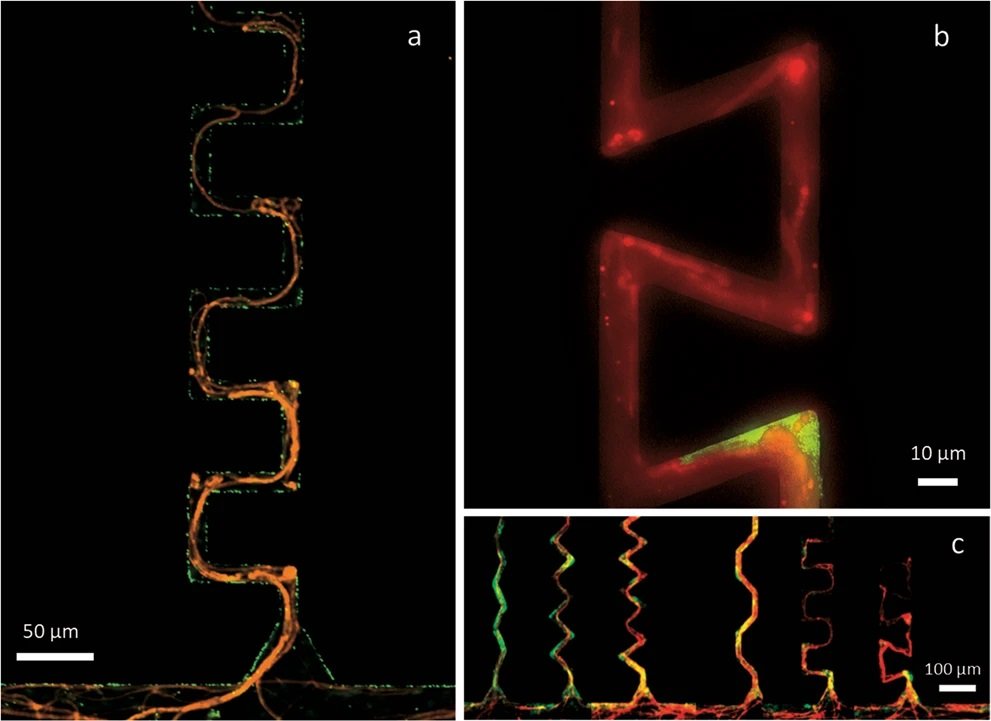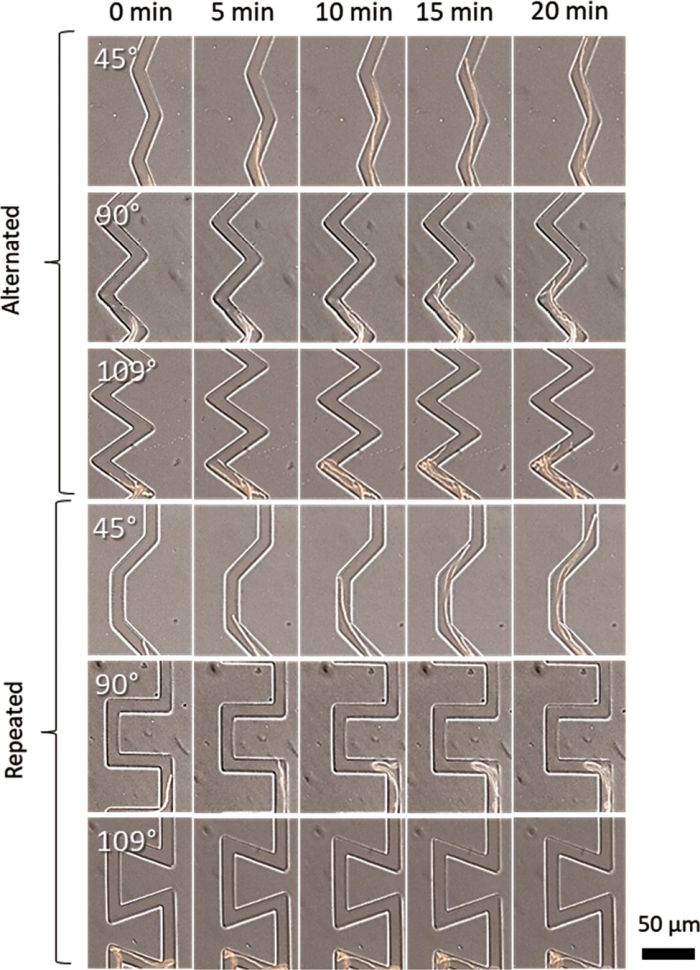
28 Oct Microfluidic platform enables researchers to investigate the effect of spatial distortion on fungal and bacterial growth
“Microhabitat conditions determine the magnitude and speed of microbial processes but have been challenging to investigate. In this study we used microfluidic devices to determine the effect of the spatial distortion of a pore space on fungal and bacterial growth, interactions, and substrate degradation. The microfluidic devices contained channels differing in bending angles and order. Sharper angles reduced fungal and bacterial biomass, especially when angles were repeated in the same direction. Substrate degradation was only decreased by sharper angles when fungi and bacteria were grown together. Investigation at the cellular scale suggests that this was caused by fungal habitat modification, since hyphae branched in sharp and repeated turns, blocking the dispersal of bacteria and the substrate. Our results demonstrate how the geometry of microstructures can influence microbial activity. This can be transferable to soil pore spaces, where spatial occlusion and microbial feedback on microstructures is thought to explain organic matter stabilization.”

“Time lapse images of C. cinerea passing through the different types of channels in the absence of a competitor at day 1” Reproduced under Creative Commons Attribution 4.0 International License. from Arellano-Caicedo, et al. Habitat geometry in artificial microstructure affects bacterial and fungal growth, interactions, and substrate degradation. Commun. Biol., 4, 1226 (2021)
Figures and the abstract are reproduced from Arellano-Caicedo, C., Ohlsson, P., Bengtsson, M. et al. Habitat geometry in artificial microstructure affects bacterial and fungal growth, interactions, and substrate degradation. Commun Biol 4, 1226 (2021). under Creative Commons Attribution 4.0 International License
Read the original article: Habitat geometry in artificial microstructure affects bacterial and fungal growth, interactions, and substrate degradation


